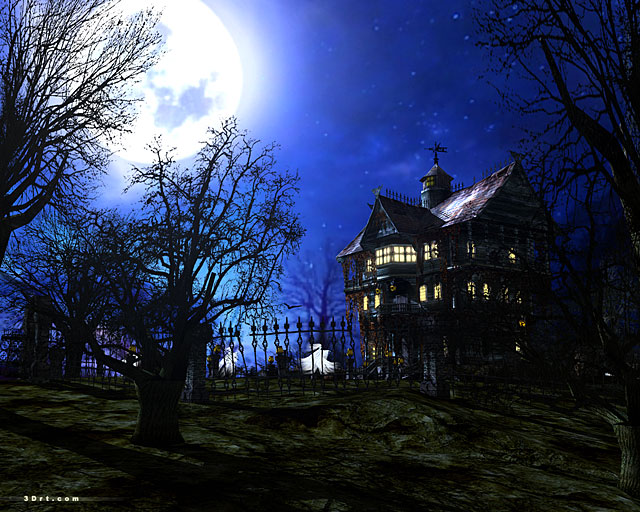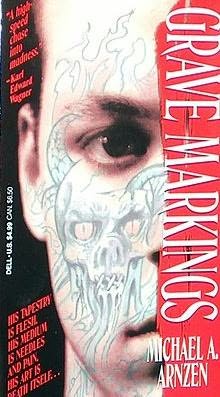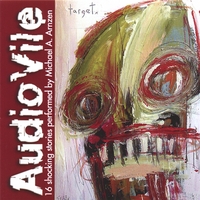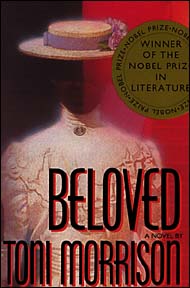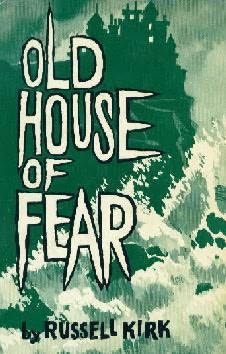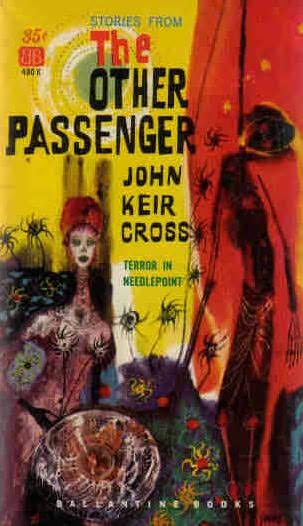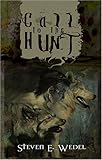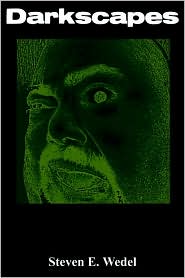
Editorial October 09 e-issue #4
By Nickolas Cook
Editor-in-Chief
By the time I was ten years old, I had officially pronounced Halloween as my favorite holiday, followed closely by Christmas and my birthday. Being a healthy red-blooded kid, you’d think any holiday that got me presents would beat out Halloween. And I won’t lie to you: I loved getting gifts (except for clothes…I still damn everyone of those practical gifts). But there was something about the night of witches and goblins that spoke to my soul so powerfully that that one single night knocked every other holiday down like ten pins.
As you may have guessed from the very nature of what you see here in this magazine, I’m unabashedly a horror geek.
Yeah, a huge one, folks.
I own more horror movies than most people own movies.
And horror novels?
Well, let’s just say we finally kicked out one of the kids to make room for our ever-expanding library of dark literature.
Hell, I still have Halloween costumes from when I was ten or eleven.
My wife and I have skulls and black candles decorating our living room. Oh, it’s tastefully done (just ask our friends). Not tacky. It somehow fits us. And not in some weird ass Wiccan way, either, but a fun spirited, dark fashion. We even got married on Halloween night (this Halloween will be our 11th year of married bliss).
Yep, I am one Class-A Horror Geek, and have been for as far back as I can remember. I’m sure my parents could tell some doozies about my horror lovin’. But don’t ask them. I think they’re still trying to pretend I’m a normal person who will one day run for President of the U.S.A.

The first horror novel I ever read was ‘The Dark’ by James Herbert. And if you’ve ever read it, bear this in mind: I was nine years old. I didn’t understand everything I read back then, but I sure as hell got the major gist of what good old Herbert was trying to do.
Thanks very much, Mr. Herbert. You made me a hardcore convert from that moment on.
I devoured horror books, as many as I could get my hands on. In fact, I blame Whitley Streiber’s ‘The Wolfen’ for making me fail Calculus. I paid no attention to the teacher because I was so wrapped up in Streiber’s prehistoric wolf creatures and their sly devastation of NYC, circa 1975.
Thanks, Mr. Streiber. Seriously, I mean it. I probably got more out of your book than that asshole teacher’s limp lectures.
From then on, I wanted to scare people like Streiber and Herbert had scared me. I salivated to do so.
But I couldn’t just walk around yelling BOO at people all the time, could I?
Hell, that wasn’t normal.
Precocious, at best. At worst, I would have deserved a nice ass beating for being an obnoxious little snot.

But see…there was this one night of the year that I could do so without any negative repercussions. On this one night I’d be, heck, normal.
I ran around dizzy every year a week before Halloween, trying to decide what I wanted to be. I have been in my young life a ghost, a witch, a devil, an ape monster, Frankenstein’s monster, Jason Vorhees, Michael Myers, a vampire, a mummy, a scary clown, Gene Simmons from KISS, a Kooky Spook.

Only once do I remember dressing up as something not scary and that was Bruce Lee. I was a martial arts geek, too, I guess.
But the inevitable finally came one Halloween, when I and my brother got too old to pull off the trick or treat routine. The year before in 1982 we’d pushed it and gotten some rather disapproving smirks from the adults. At the end of the night, bags filled with candy, mama told us it was our last year for trick or treat. There are some doors that never open again, some moments that just inherently break your heart.

So we did the next best thing and created a huge haunted woods exhibit for the neighborhood kids to walk through. I mean this thing was intricate stuff, man. We had lighting tricks, scary scenarios with bloody headless corpses, flying ghosts on wires, live people running around with fake knives and axes. Our little Halloween haunted woods thing got pretty popular. Soon we had adults making their way through our trails that night and actually getting scared all in the name of Halloween fun.
We did that for a couple of years, until the neighborhood kids got too old for it. We got into our mid teens and girls became a lot more important to us than yelling BOO for a while.
Skip ahead to present day, 2009, and I’m still trying to recreate that same sense of fun and scares that once gave me such a jolt as a kid. I still watch every new horror movie in the hopes that something will do what my old favorites did back then. I still read tons of horror novels, looking for old friends in the archetypes and classics. And now I write horror, in the hopes that my work will one day help give a jolt to some kid out there who needs something to latch onto to stay alive in the dark times.
But, you know, horror has changed.
Halloween has changed.

After years of constant pressure from Rightwing religious groups, and well meaning, but ultimately ignorant, mother’s groups, I think it’s become a lame merchandising holiday, sort of like Valentine’s Day or Secretary’s Day. There’s no darkness left in it; no fear. No terror of the unknown. It’s pastel Easter egg safe. Diluted. Homogenized. And dull as dishwater, folks.
I see very few witches or goblins coming to our door these days. I do, however, see a lot of Transformers, Jedi, Hanna Montanas, and the like.
They’re sure enough scary…but not in a good way, you know?
What happened to the days of letting a kid taste fun fear for just that one night of the year?
When did it become a crime to frighten, even disgust, for the sake of fun?
Have we pretty much PCd ourselves right out of our Halloween traditions?
Has the feminized U.S of A. decided that scaring for fun is sick and degrading?
Not sure when it happened, but it has.
Why is it okay to call an innocent night of dress up and trick or treating evil, but it’s just fine to have a whole holiday for some guy who got nailed to a cross?
Let me repeat that: HE WAS NAILED TO A FUCKING CROSS.
Doesn’t that strike you as a little morbid?
I don’t know about you, but that is a seriously frightening thought, and not one I’d willing thrust upon an unsuspecting kid. You can dress it up in all the warm sweet-ums you want, but the guy died after being tortured, nailed to a cross, and left to bleed to death. And we, in this dumbass country, celebrate the fact that he got kilt in a fairly horrendous and gory manner.
Well, I know one monkey don’t stop no show, but let me say this: Halloween was meant to be fun for kids (and adults), not a goddamn excuse to stuff candy into a bag, watch Martha fucking Stewart carve a right nice pumpkin, or watch reruns of the ‘Addams Family’ on TVLand.
What this country needs is a good old fashioned for-fun scarefest.
We need to be reminded of the simple joy of scaring someone to see them jump and then laugh at our silly fright together.
What we need is less PC and more fear of the unknown.
We need the dark to still hold our deepest terrors in its cold primordial bosom.
We need horror movies that disturb--not explode so we know when to applaud.
We need that one simple night back again when it’s okay for a kid to dress as the most frightening creature he can think of and to enjoy his chance to yell BOO!
Anyway, we’ve got some great stuff this issue, including our TOP 50 HORROR MOVIES OF ALL TIME LIST. We hope you enjoy this first annual Halloween issue and we hope you’ll take a moment to remember the simple joy of yelling BOO for the fun of it.
--Nickolas Cook
(Editor’s Note: My opinion does NOT in anyway reflect those of my fellow staffers or our guests in this issue. If you have something to say about the above decidedly antichristian statements, please feel free to send all your email complaints to Nickolasecook@aol.com)
